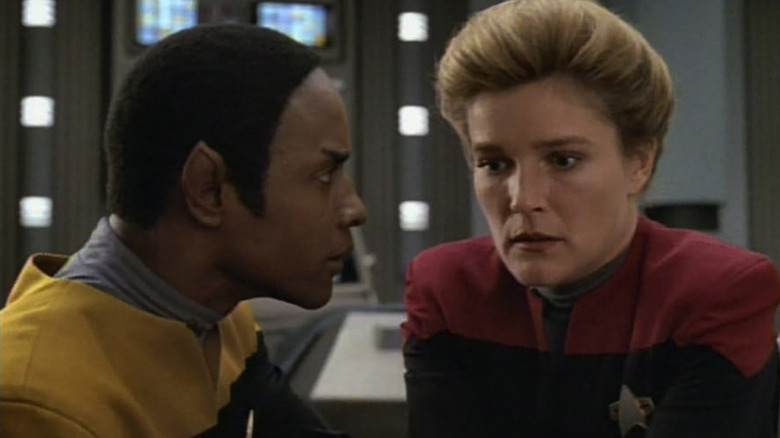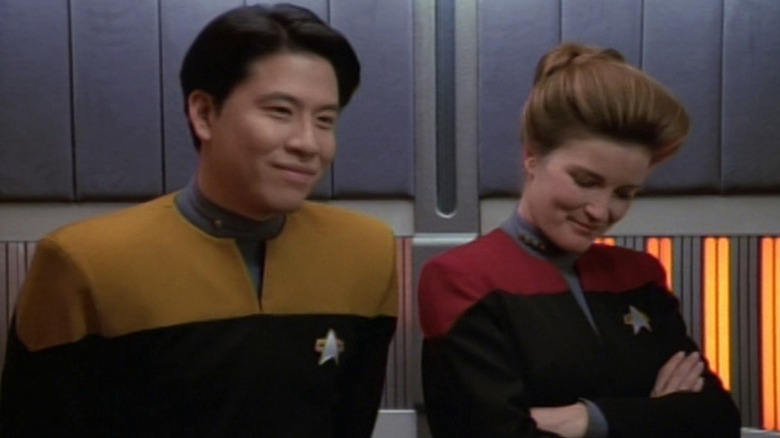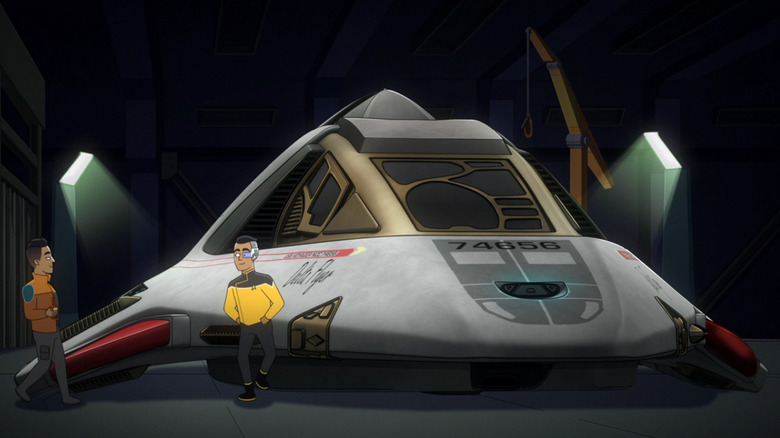
From a certain perspective, "Star Trek: Voyager" was the purest of the "Star Trek" shows. The premise saw the show's title ship, the U.S.S. Voyager, magically whisked across the entire galaxy by a godlike alien and deposited in the Delta Quadrant, 70 years away from Earth. The series was about how the Voyager and its crew traverse unknown space in an effort to return home. The Delta Quadrant was so far from Earth that all the aliens the Voyager encountered hadn't ever heard of the Federation, Starfleet,
or any of the usual trappings of "Star Trek." The U.S.S. Voyager was on its own, truly alone, unable to call for backup, and unable to demonstrate that the crew had allies.
"Voyager" was pure in that the characters had to rely on their principles. It's easy to be confident about Starfleet ideals when there are a thousand ships from hundreds of worlds -- all of them providing near-unlimited resources -- covering your back. It's harder when you have to be the sole representative of Starfleet on a lone ship with dwindling resources and an increasing sense of desperation.
An element of "Voyager" that was never thoroughly explored, however, was its lack of resources. Federation starships are miracles of technology, and their power supplies are vast and deep, but they are not perpetual motion machines with inexhaustible resources. "Star Trek: Voyager" presented the tantalizing notion that a Starfleet vessel may run out of food, water, or power. This would force the show's writers to invent resource-related stories about how a starship crew would survive when they can't refuel at a local Starbase.
This intriguing premise, sadly, was forgotten after less than a season, and the Voyager's supplies seemingly became infinite again in due course. The reason why the Voyager never ran out of resources is because the writers forgot to write stories about scarcity.
Read more: The 10 Most Powerful Star Trek Ships, Ranked
The U.S.S. Voyager Once Had To Deal With Dwindling Resources

At the start of the series, it was stated on camera by Chakotay (Robert Betran) that the U.S.S. Voyager only had a complement of 38 photon torpedoes. Captain Janeway immediately notes that they have no way to replace them once they've been fired. One might think that the show's writers would keep that in mind, and perhaps even have a large ticker in the writers' room whenever a torpedo was fired. Fans noticed, however, that the Voyager was never stingy with its torpedos, and certainly fired more than 38 before the conclusion of its seventh season. Resourceful editors have cut together reels of the torpedo launches throughout "Voyager," and found that the ship shot off 123 of them. The show's writers never explain where the extra 85 torpedoes came from. Scarcity, it seems, didn't interest the showrunners.
Also early in the series, Janeway points out that power is limited, and the ship's officers need to be mindful of using the battery-draining food replicators, their primary source of nutrition. Her solution is to construct a makeshift hydroponics bay in one of the Voyager's cargo holds, and hire a chef, Neelix (Ethan Phillips), to prepare the bulk of the ship's meals. Officers could still use the replicators, but only on a rationed basis. There were many scenes on the first few seasons of "Voyager" wherein characters were seen farming vegetables and caring for plants. Eventually, though, mentions of the hydroponics bay became rarer and rarer, and pretty soon, it seemed like the food problem was taken care of.
It was also mentioned early in "Voyager" that the ship was in a part of the galaxy that was peppered with desert worlds, and that water was rare. The Voyager never seemed to have any problems making water. Perhaps the replicators could be used for water in any circumstances.
Where Did The Delta Flyer Come From?

Also, the Voyager was equipped with holodecks, and one might think those would be banned for recreational use as soon as power supplies became an issue. Instead, the Captain let people use them 24/7, keeping programs running for what seemed like weeks on end. I understand that being cooped up on a starship miles from Earth will damage crew morale, and that recreation is key, but surely there are more energy-efficient ways to keep morale up, right? Neelix also served as the ship's morale officer, and he only seems to have made minimal efforts to get some other, non-holographic activities going.
When it came to stories about scarcity, everything kind of ended in the episode "Extreme Risk" (October 28, 1998). In that episode, the Voyager launched a resource and information-laden probe, only to have it spotted by an enemy vessel (yes, the Voyager made enemies). Captain Janeway moves fast, grabs the probe, and hides it in the corona of a nearby star. To retrieve it, however, the Voyager has to construct a ship that is faster and stronger than their usual shuttlecraft. Working under the gun, the crew constructs a hyper-warp support craft called the Delta Flyer that can fly into a star's corona, but also move at warp speeds. It has its own warp drive.
Where did they get the parts they needed to make the Delta Flyer? There's no dialogue about what they needed to cannibalize from on board to make it. They just made it. If they can construct a warp-capable ship in a matter of hours, using parts they seem to have manifested from thin air, then clearly scarcity is a distant concern.
It would have been nice if there had been a "Voyager" episode about how they discovered a near-infinite power source, as it would have covered for a lot of the technical inconsistencies on the show. There will never be an adequate explanation, though, for where they got those 85 extra torpedoes.
If you're looking for the easiest way to keep up with all the major movie and TV news, why not sign up to our free newsletter?
Read the original article on SlashFilm.










